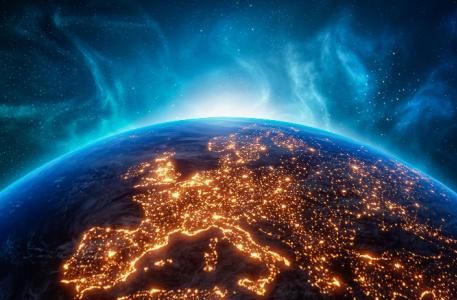
Light Pollution: Why it Matters and What Homeowners Can Do About It
Humans rely heavily on artificial lighting, especially at night. We use it to light our homes, yards, and communities. Sometimes, however, artificial lighting can be excessive and does more harm than good. That’s when it’s called light pollution.
Why is light pollution a problem?
Before artificial lighting was invented, the skies were always dark at night. As a result, every living creature could readily see the stars, the planets, and the Milky Way on cloudless nights.
According to researchers, nighttime skyglow from cities is “one of the most dramatic modifications that humans have made to Earth’s biosphere, and it is increasingly extending into nocturnal landscapes far beyond urban areas.”
Skyglow occurs when light’s upward illumination scatters off of atmospheric molecules, suspended aerosols, and clouds. If artificial light overpowers darkness, it can disrupt natural nocturnal patterns. The impacts include:
Health and well-being - People tend to operate best when their sleep/wake patterns match the rhythms of daylight and darkness. Artificial light at night can interrupt that cycle, and research suggests this can lead to a higher risk of obesity, depression, sleep disorders, diabetes, and more.
After the sun has set, it can be especially harmful to use screens that emit light at the blue end of the color spectrum.
Wildlife - Animals and plants rely on the natural rhythms of daylight and darkness. But light can disrupt animals’ movements when it dominates the night skies.
For example, birds that migrate or hunt at night rely on moonlight or starlight to navigate. Artificial lights can throw them off course, and illuminated office buildings pose a significant collision threat.
Safety - While it’s a widely believed that well-lit areas are safer than dark spaces, the opposite may be true. For example, the Chicago Alley Lighting Project found a correlation between brightly lit alleyways and increased crime.
No one offers definitive explanations of light’s impact on crime, but the theory is that light can help perpetrators see potential victims and property more easily.
Additionally, bright and unshielded lights cause our pupils to constrict and impede vision. For drivers, glaring street lights can actually increase the risk of accidents.
Energy consumption - Excessive light also translates into wasteful spending on energy production and releasing unnecessary carbon dioxide emissions into the atmosphere.
Who is affected?
According to the “World Atlas of Artificial Night Sky Brightness,” more than 80 percent of the world’s population lives under light polluted skies. In the U.S. and Europe, 99 percent of residents are subjected to skyglow at night.
To see the extent of light pollution in your part of the world, explore maps from the Cooperative Institute for Research in Environmental Sciences (CIRES) or NASA’s Blue Marble Navigator.
5 Ways to Make a Positive Impact
Even though most of the light pollution in your community occurs beyond your property lines, there are numerous ways homeowners can contribute to better artificial lighting results:
1. Turn off unnecessary outdoor lights.
For example, it may be convenient to constantly leave a porch light on, but since outdoor lighting isn’t needed during the day, please consider using it only when necessary.
2. Use motion sensors and timers.
Motion sensors can help ensure outdoor lights are only illuminated when people are present. Similarly, timers provide the convenience of automatically turning your lights on and off during essential hours.
3. Reduce the brightness.
Another option is to replace your bulbs with lower wattage/lumen versions that provide adequate instead of excessive light.
4. Eliminate blue light.
Newer LED bulbs are offered across a warn-to-cool color spectrum called the Kelvin scale. But since blue light brightens the night sky more than warmer colors and harms humans and wildlife, select bulbs at or under 3,000 Kelvins.
5. Point lights down.
Select fixtures that direct the light towards the ground instead of horizontally or to the sky. In addition to reducing light pollution, your neighbors may welcome less light shining through their windows.
To see examples of residential outdoor lighting that meets these guidelines, visit the International Dark-Sky Association’s (IDA) directory of dark sky-friendly lighting. The IDA also offers more tips on protecting the night skies in your community.
